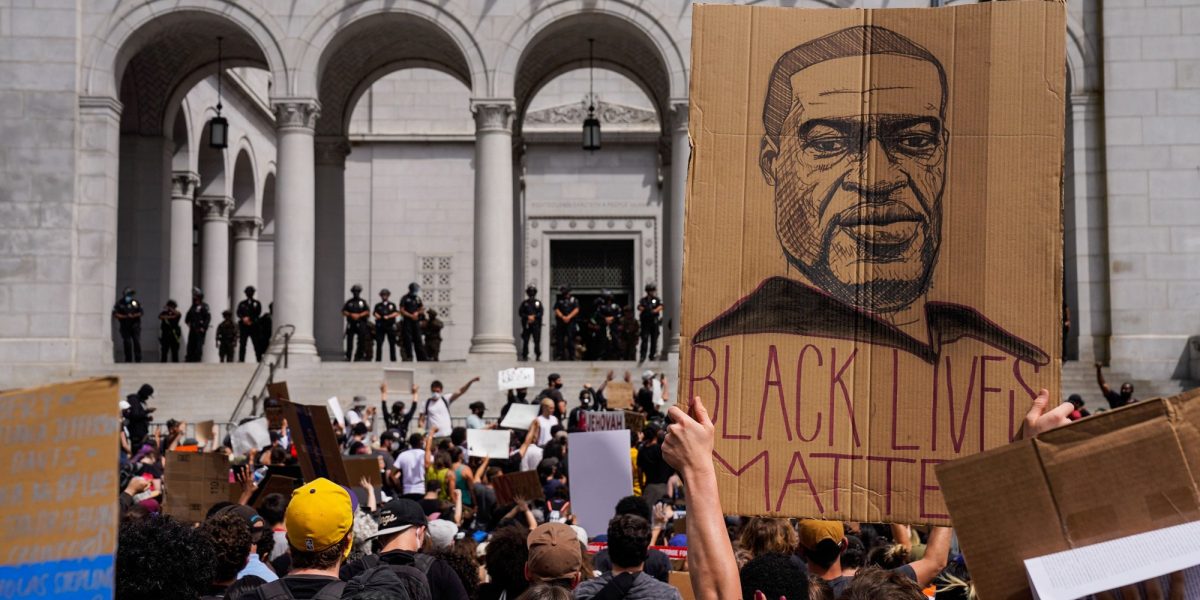Sharon Roberts, Arlene Reid and Leonard Rodriques are all Ontario personal support workers who died as front-line workers during COVID-19. Regis Korchinski-Paquet was killed at the hands of the police at her Toronto apartment during COVID-19, and Obi Ifedi was assaulted by officers enforcing physical distancing. All are Black, and highlight the pandemic of anti-Black racism that preceded and is intertwined with COVID-19.
Viral pandemics are never purely biological events. As Jonathan Mann, director of World Health Organization program on AIDS explained in 1987, “It is useful to consider AIDS as three distinct yet intertwined global epidemics. The first is the epidemic of the HIV infection itself. The second is the epidemic of the disease AIDS…Finally, the third epidemic of social, cultural, economic and political reaction to AIDS is also worldwide and is as central to the global AIDS challenge as the disease itself…AIDS has unveiled the dimly disguised prejudices about race, religion, social class, sex and nationality.”
Now we’re in the midst of another series of pandemics. There’s the first pandemic of the novel coronavirus which can spread undetected, the second pandemic of the disease COVID-19, and the third pandemic of reaction—including anti-Asian and anti-migrant racism that scapegoat for the virus, and anti-Black racism which is intertwined with coronavirus transmission, COVID-19 mortality, and the policing of physical distancing.
Anti-Black racism and coronavirus transmission
Stopping coronavirus transmission at work requires personal protective equipment and staying home when sick. But Black workers, especially Black women, are disproportionately in low-wage precarious jobs that both put them at risk of coronavirus and deny them the protection of PPE and paid sick days. As Black health leaders explained, “Black workers, (particularly Black women), are over-represented in front facing service provider roles, including among PSW and RPN’s. Many are providing essential services, yet unable to access support for their families. These factors will exacerbate precarity, food insecurity, isolation and mental health concerns.”
The understaffing at for-profit long-term care homes means these essential workers have to care for more patients at once, and the low-pay and lack of regular hours means they have to work at multiple sites. This, combined with the lack of personal protective equipment and paid sick days, places PSWs at high risk of contracting and transmitting the coronavirus. “There are so many PSWs like him who are not being protected,” Leonard Rodriques’ daughter explained. “My dad’s dead, gone, and there are a lot of families who have lost their loved ones because they weren’t being protected.” The lack of protective equipment is an expression of the lack of workplace rights, including the right to refuse unsafe work. As Arlene Reid’s daughter said, “She told them that she didn’t want to go and they had told her that it would be job insubordination.”
Anti-Black racism: a pre-existing condition
Anti-Black racism not only fuels living and working conditions that put communities at higher risk of contracting coronavirus, but it also increases mortality from COVID-19. While only 6% of the National Health Service workers in the UK are Black, 27% of healthcare workers who died of COVID-19 are Black—and the majority of healthcare workers who have died were nurses or healthcare support workers.
The risk of COVID-19 mortality increases with chronic health problems like hypertension, which are more common in Black communities. But like COVID-19, this is not a natural biological phenomena but an embodiment of a racist society. As epidemiologist Nancy Krieger explained, “Considering the public health problem of increased risk of hypertension in African Americans compared with white Americans, ‘embodiment’ reminds us that a person is not one day African American, another day born low birth weight, another day raised in a home bearing remnants of lead paint, another day subjected to racial discrimination at work (and in a job that does not provide health insurance), and still another day living in a racially segregated neighborhood without a supermarket but with many fast food restaurants. The body does not neatly partition these experiences—all of which may serve to increase risk of uncontrolled hypertension, and some of which may likewise lead to comorbidity, for example diabetes, thereby further worsening health status.”
As a result, Blacks in the US are dying of COVID-19 at three times the rate of whites. But the situation is arguably worse in Canada, because these stats do not exist. The Ontario chief medical officer claims that “regardless of race, ethnic or other background, they’re all equally important to us.” But as Angela Robertson of the Parkdale Queen West Community Health Centre explained, “As much as we have critiques of the health-care system in America, they have done data collection, they can disaggregate by race within health care. We in Canada have been glacial in our movement in the collection of race-based data in our health-care system. As a result we will not be able to identify the disproportional access challenges, deaths, illnesses that Black communities will experience as a result of COVID-19. My fear is that the real health impact on Black community will be hidden.”
Anti-Black racism and the policing of physical distancing
Stopping coronavirus transmission requires physical distancing. But anti-Black and anti-Indigenous racism enforces physical proximity through precarious housing and prisons, which place Black and Indigenous people at higher risk of coronavirus transmission and reinforce poverty and chronic health conditions that increase the likelihood of COVID-19 mortality. As Rejean Hoilett of the Toronto Prisoners Justice Project explained at a day of action for decarceration, “This is a human rights catastrophe. Indigenous and Black populations are incarcerated at rates that drastically exceed their proportion in the Canadian population. Failing to release prisoners demonstrates not only a failed public health policy, but it is also a form of racial injustice.”
At the same time, the policing of physical distancing has been racialized. While Toronto mayor John Tory joined a large gathering of mostly white people in close proximity at a park without a mask, Ottawa police assaulted Obi Ifedi for wearing a mask and walking alone with his young daughter. “He was even swearing in front of my daughter. I turned and told him we’ve already left the park, why are you still yelling at us? Even my daughter turned and said, ‘We already left.,’” he said. “As a black person in that situation, with my daughter, I was terrified…As I ran, the bylaw officer intercepted me at the grass across the sidewalk and I slipped as I tried to avoid him. I was on my back with my hands out and the bylaw officer jumped on my waist and punched me straight in the mouth.”
Racist policing during COVID-19 reflects racist policing before COVID-19. Before COVID-19, Ottawa police assaulted and killed Abdirahman Abdi, and during COVID-19 Ottawa police assaulted Obi Ifedi. Before COVID-19 Andrew Loku’s mental distress ended with his death by Toronto police at his apartment, and during COVID-19 Regis Korchinski-Paquet’s mental distress ended with her being pushed off her balcony by Toronto police. Before COVID-19 New York police choked Eric Garner until he couldn’t breathe, and during COVID-19 Minneapolis police choked George Floyd until he couldn’t breathe.
As Angela Davis wrote of the transition from slavery to free market capitalism, “If Black people, by means of terror and violence, could remain the most brutally exploited group within the swelling ranks of the working class, the capitalists could enjoy a double advantage. Extra profits would result from the superexploitation of Black labor, while white workers’ hostilities toward their employer would be defused.” The new pandemic of COVID-19 has highlighted the old pandemic of anti-Black racism on which capitalism was founded and continues to rely on, which creates conditions of superexploitation and incarceration in which viral pandemics thrive.
As with AIDS, COVID-19 has unveiled the dimly disguised prejudices about race, social class, sex, nationality, and mental health, and confronting anti-Black racism is as central to the COVID-19 challenge as the disease itself. This means organizing against the policies of racial state violence: we need to win higher wages and fair schedules. Racialized women on the frontlines of the pandemic need paid sick days and the right to refuse unsafe work to reduce coronavirus transmission. Confronting racism means challenging the totality of the social and economic stressors that increase COVID-19 mortality for racialized communities. Confronting the pandemic compels us to abolish racist prisons and police whose justifications of “community safety” and “physical distancing” medicalizes anti-Black and anti-Indigenous violence.
#JusticeforRegis #JusticeforFloyd #BlackLivesMatter
Did you like this article? Help us produce more like it by donating $1, $2, or $5. Donate

